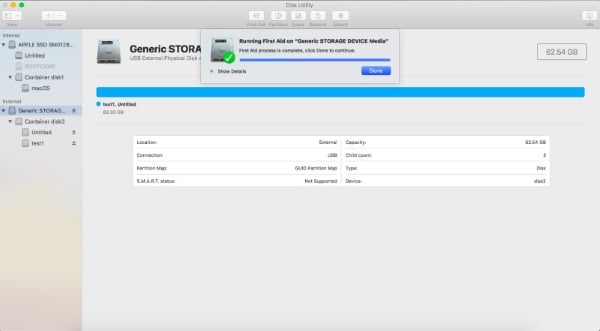

- Symbol after mac ssd upgrade mac os#
- Symbol after mac ssd upgrade install#
- Symbol after mac ssd upgrade upgrade#
- Symbol after mac ssd upgrade pro#
- Symbol after mac ssd upgrade code#
So getting back to the cable, Apple used a newer PCH chip in the 2011 models but programmatically limited them to SATA II in the systems EFI code (BIOS) originally. While some SATA III drives are able to match up to the systems SATA port's limits many don't or might have a problem as the system port has an issue in the negotiation process. So we can have a SATA I drive fit in any system, but we can't put in a fixed speed SATA III drive in a SATA I or SATA II system as the data rate is too much.
SATA is like this! It has three versions SATA I (1.5 Gb/s), SATA II (3.0 Gb/s) & SATA III (6.0 Gb/s). So you can't go too fast as the road might be too windy at higher speed or maybe the bridge is not able to support the weight of the truck or maybe the underpass is too low for the truck to go under without getting stuck. A road built in 20's might not be suitable for a more modern car or truck, yet we drive on them as long as we don't exceed what it was designed to support. So lets think this though in a different way. We know the original HD SATA cables used in the 2009 & 2011 models were designed for the HD drives of the time (SSD were just coming onto the market and still very expensive!) The drives at this time where only SATA II (3.0 Gb/s).
Symbol after mac ssd upgrade upgrade#
It you want to you can alter the installer not to upgrade the SSD to APFS file - Life is so simple -} Apple doesn't fully explain things or their actions. Once you get it working with it make a good backup (TimeMachine) just in case. I would reformat the SSD and stick with Sierra. I also place a strip of electricians tape on the uppercase where the cable crosses over as the rough surface tends to wear the cable as well.
Symbol after mac ssd upgrade pro#
Here is the correct cable: MacBook Pro 15" Unibody (Mid 2012) Hard Drive Cable Apple P/N 923-0084. In truth you want a even arch not a sharp fold as you damage the thin foil wires and the shield. The other factor is many people damage the cable just putting it in! Many people stress the cable when they fold it around the corners.

This has to do with the ability of the cable to handle the higher flow rates the SSD pushes and pull’s, unlike an HDD. There are a few different versions of the HD SATA cable and you really need to newer one with a SSD drive. But, if you put that aside, I don’t recommend using High Sierra or Mojave on SATA based system with APFS as the queue depth is not very deep unlike PCIe/AHCI or PCIe/NVMe blade SSD’s used in the retina models. While Apple states it supports 2012 MacBook Pro’s, I’m not sure if the Unibody was what they meant as there is the 2012 retina model as well. I am booting with an external for the last few weeks now. I am beginning to think that this is really a problem about EFI or the new APFS format, which I know nothing about.Īny help would be appreciated. I am almost sure the new cable is working fine, because my infrared receiver was not working anymore, and it works now with the new SATA cable. Here are a few interesting details: I have a bootcamp partition on my HDD and Windows boots perfectly, internally or externally connected since the beginning. But they work if they are connected via external adapter. I still get the prohibitory sign on my SSD and HDD if the are internally connected. So, I decided to replace the SATA cable, but it did not change anything. I know get the same prohibitory sign with my old HDD with High Sierra. After a while my internal HDD also stopped working. And it works perfectly with the external adapter.
Symbol after mac ssd upgrade install#
I finally decided to install MacOS Mojave on the SSD and transfered everything from the old HDD with the migration assisstant.
Symbol after mac ssd upgrade mac os#
I also tried to clean install Mac Os Mojave to the new SSD but did not work. So I thought, maybe if I format it with the the new format I am not familiar with (APFS), it could work. Interestingly, when I installed the HDD back to the computer, it was booting perfectly. It was loading up to certain point and was showing the prohibitory sign after a while. I later decided to upgrade to MacOs Mojave, and I got the very first Prohibitory sign.

After it was finished it booted without a problem. The first thing I have tried was to connect my old HDD with an external adapter and restore the Mac Partition (High Sierra) on my new SSD. I have recently upgraded my HDD with a new SSD (WD Blue - 1TB 3D NAND) on my Macbook Pro 15” Mid 2012. First of all I have checked most of the answers people got with the same issue.


 0 kommentar(er)
0 kommentar(er)
